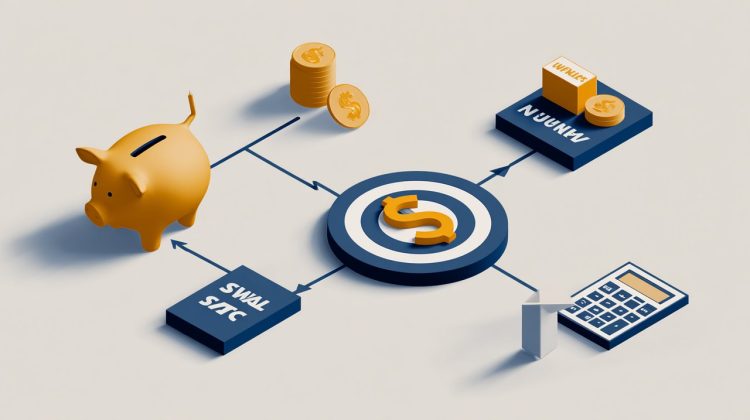Achieving financial independence and early retirement (FIRE) represents a significant life goal for many, promising freedom from the traditional nine-to-five and the ability to live life on one’s own terms. The cornerstone of this aspiration is the FIRE number – the precise amount of capital required to sustain your desired lifestyle without active employment. Pinpointing this figure is not merely an exercise in arithmetic; it’s a foundational step that transforms an abstract dream into a tangible, achievable plan.
Defining Your FIRE Number
Your FIRE number is essentially the total investment portfolio size that, when drawing down a small percentage annually, can cover your living expenses indefinitely. It’s the financial bedrock upon which your future independence rests. Without a clear target, your journey toward financial freedom lacks direction. This guide provides a systematic approach to calculating this crucial figure, enabling you to build a robust blueprint for your financial future.
Step 1: Accurately Determine Your Annual Expenses
The most critical input for your FIRE calculation is a realistic assessment of your annual spending. This figure should reflect the lifestyle you envision during your financially independent years, not necessarily your current spending if it includes expenses you plan to eliminate, especially considering strategies to eliminate debt swiftly and effectively 10 Tips to Get Out of Debt: Your Practical Guide to Financial Freedom.
- Track Your Spending: For at least three to six months, meticulously track every dollar spent. Categorize expenses into essentials (housing, food, utilities, transportation, healthcare) and discretionary items (entertainment, dining out, travel, hobbies).
- Project Your Future Lifestyle: Consider how your expenses might change in retirement. Will your housing costs decrease, a decision often influenced by the long-term comparison of renting versus buying Rent vs. Buy: How to Compare Costs the Smart Way? Will travel increase? Will work-related expenses (commuting, professional attire) disappear? Factor in potential new hobbies or passions.
- Distinguish Between Temporary and Permanent Expenses: Exclude any temporary or one-off expenses (e.g., a wedding, a major home renovation that won’t recur annually) from your ongoing annual budget.
Example: If your current annual spending is $60,000, but you anticipate reducing commuting costs, eliminating mortgage payments (if your home will be paid off), and increasing travel by $5,000, your projected FIRE expenses might be $55,000.

Step 2: Select Your Safe Withdrawal Rate (SWR)
The Safe Withdrawal Rate (SWR) is the percentage of your investment portfolio you plan to withdraw each year to cover your expenses without running out of money. The widely cited “4% rule” originated from the Trinity Study, suggesting that withdrawing 4% of an initial portfolio, adjusted for inflation annually, had a high probability of lasting 30 years or more.
- Understanding the 4% Rule: This rule implies that for every $1 you need annually, you require $25 in your portfolio (1 / 0.04 = 25). So, if your annual expenses are $60,000, your FIRE number would be $60,000 x 25 = $1,500,000.
- Considering Variations: While 4% is a common starting point, your personal circumstances might warrant a different SWR:
- Lower SWR (e.g., 3% or 3.5%): Provides a higher margin of safety, especially if you anticipate a very long retirement (e.g., retiring in your 30s or 40s), are highly risk-averse, or expect lower market returns. A 3% SWR means you need 33.3 times your annual expenses (1 / 0.03).
- Higher SWR (e.g., 4.5% or 5%): Might be considered if you plan to retire later, have a shorter retirement horizon, are comfortable with more risk, or have other income streams.
- Factors Influencing SWR: Market conditions, portfolio asset allocation, and your personal risk tolerance all play a role. A more conservative SWR offers greater peace of mind.
Step 3: Calculate Your Target FIRE Number
With your projected annual expenses and chosen SWR, calculating your FIRE number is straightforward: FIRE Number = Annual Expenses / Safe Withdrawal Rate (as a decimal)
Example 1 (using 4% SWR):
- Projected Annual Expenses: $55,000
- Safe Withdrawal Rate: 0.04 (4%)
- FIRE Number = $55,000 / 0.04 = $1,375,000
Example 2 (using 3.5% SWR):
- Projected Annual Expenses: $55,000
- Safe Withdrawal Rate: 0.035 (3.5%)
- FIRE Number = $55,000 / 0.035 = $1,571,428

Step 4: Account for Inflation and Future Costs
Inflation erodes purchasing power over time. A dollar today will buy less in 20 or 30 years. Your FIRE number should ideally be calculated with today’s dollars, assuming your SWR strategy implicitly handles inflation by withdrawing an inflation-adjusted amount each year from a portfolio that also grows with inflation. However, explicitly considering future cost increases for specific categories can enhance accuracy.
- Healthcare Costs: These often rise faster than general inflation and can be a significant expense in retirement. Research potential out-of-pocket costs and consider health savings accounts (HSAs) or long-term care insurance.
- Major Future Expenses: Factor in any anticipated large, non-recurring expenses like replacing a roof, buying a new car, or supporting adult children, either by increasing your FIRE number or creating separate sinking funds, always considering the total cost of ownership beyond the initial price tag Beyond The Price Tag: What Is Total Cost Of Ownership (TCO) And Why It Matters More Than The Sticker Price?.
Step 5: Incorporate Other Income Streams and Considerations
Your FIRE number doesn’t always have to cover 100% of your expenses if you anticipate other income sources.
- Social Security/Pensions: If you expect to receive Social Security benefits or a pension, these can reduce the amount your portfolio needs to generate. Subtract these anticipated annual incomes from your projected annual expenses before calculating your FIRE number.
- Part-time Work/Side Gigs: Many individuals pursuing FIRE plan for “semi-retirement,” where they work part-time or pursue passion projects that generate some income. This can lower your required FIRE number or provide a buffer.
- Geographic Arbitrage: Relocating to a lower cost-of-living area can significantly reduce your annual expenses, thereby lowering your required FIRE number.
Step 6: Track Progress and Adjust Your Plan
Calculating your FIRE number is not a one-time event. Life circumstances, market performance, and personal goals evolve. Regularly review and adjust your plan:
- Annual Review: Re-evaluate your annual expenses, SWR, and overall progress at least once a year.
- Adapt to Life Changes: Marriage, children, career shifts, or health changes will necessitate adjustments to your FIRE number and strategy.
- Optimize Your Savings Rate: The speed at which you reach your FIRE number is directly proportional to your savings rate. A higher savings rate means reaching your goal sooner.
Beyond the Numbers: The Mindset of Financial Independence
While the calculations are crucial, the journey to financial independence also involves cultivating a mindset of intentionality. It demands discipline, strategic decision-making, and a clear vision for what you want your liberated life to entail. Understanding your FIRE number provides the clarity and motivation to make informed choices, transforming abstract desires into a concrete and achievable reality. Knowing your FIRE number is empowering. It demystifies financial independence, providing a clear target and a roadmap for action. This step-by-step guide offers the definitive blueprint, enabling you to take control of your financial future and build the life you truly desire. The path to freedom begins with this essential calculation.
Fire Path planner
💡 Frequently Asked Questions
The FIRE number is the precise amount of capital required to sustain your desired lifestyle without active employment, representing the total investment portfolio size needed to cover your living expenses indefinitely.
You calculate your FIRE number by dividing your projected annual expenses by your chosen Safe Withdrawal Rate (SWR) as a decimal. For example, if you need $55,000 annually and choose a 4% SWR (0.04), your FIRE number would be $55,000 / 0.04 = $1,375,000.
The Safe Withdrawal Rate (SWR) is the percentage of your investment portfolio you plan to withdraw each year to cover your expenses without running out of money. The '4% rule' is a widely cited SWR, implying you need 25 times your annual expenses (1 / 0.04).
Key factors include accurately determining your annual expenses in retirement, selecting an appropriate Safe Withdrawal Rate (SWR), accounting for inflation and future costs like healthcare, and incorporating any other anticipated income streams such as Social Security or part-time work.
No, calculating your FIRE number is not a one-time event. It requires regular review and adjustment, at least annually, to adapt to life changes, market performance, evolving personal goals, and to optimize your savings rate.








